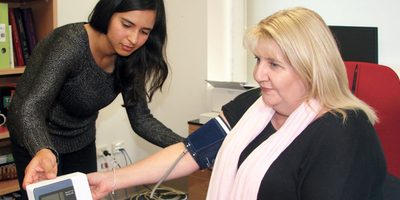
Towards better migraine management on a global scale
Like all general practitioners (GPs), I have seen countless patients with headaches and migraine. Headaches are very common and one in every seven people experiences the debilitating pain of migraine.
Globally, the figures are staggering - migraine is estimated to impact 14-15 per cent of the population, representing a major cause of ill health for up to 1 billion people. It’s the world’s second-leading cause of disability overall and the first among women.
The good news is that more than 90% of people with migraine could be managed by their GPs, where the goal is to prevent or manage as many episodes as possible because of the terrible impact they have on the patient’s quality of life. The bad news is that not all GPs are aware or allowed to prescribe drugs that might help prevent future migraine attacks among their patients. Certain medications remain unavailable in certain countries or can only be prescribed by specialists such as neurologists.
I spent some time working in a remote part of my birth country Iran. Since referring patients was sometimes not possible, especially if they had to travel long distances to a nearby city, I had to try to manage patients myself with whatever was available and affordable. I used to wonder why I could only prescribe some blood pressure medications but not others when a migraine patient was not responding to treatment or was experiencing adverse effects? Why couldn't I try other blood pressure medications from a different class to see if they worked? I used to feel helpless at times hearing my patients’ stories of the painful impact of migraine on their lives. Parents not being able to look after their kids. Breadwinners not being able to work. And doctors like me not being able to help.
The new anti-migraine medications, called anti-CGRP, are effective and recommended as first line treatment for migraine prevention by European Headache Federation. However, they are expensive and not affordable for many low- and middle-income countries. We need to better understand and identify other effective, low-cost and widely available drugs that can be prescribed by GPs globally to help prevent migraine, alongside other preventive measures such as avoiding triggers and making lifestyle changes.
Myself and colleagues from The George Institute for Global Health recently conducted a large-scale review of international studies on the positive effect of blood pressure medicines across all classes in preventing migraine. Published in Cephalalgia, we found that almost all groups of blood pressure-lowering medications showed a noteworthy ability to decrease the frequency of monthly headache days in individuals with migraine.
This revelation carries immense significance as it holds the potential to expand the range of blood pressure medications incorporated into migraine management guidelines globally. These medications are widely accessible in most countries, generally affordable, and are within the prescription capabilities of GPs. Essentially, it could provide doctors all over the world with another tool in their toolkit to help reduce the suffering faced by their patients.
Sounds great, no?
Unfortunately, while this is an important step towards better migraine management in remote or low- and middle-income contexts, more high-quality research is needed to support these findings and address the remaining uncertainties. Many existing studies suffer from outdated methodologies that fail to align with current migraine research guidelines and often feature limited sample sizes.
Our research is not trying to endorse the use of blood pressure medications for migraine management over other treatments. We are simply trying to generate evidence to improve how we can better manage headache disorders in primary healthcare on a global scale. As both a GP and a dedicated researcher focusing on headache disorders, I believe it is our duty to empower doctors and headache clinicians with a broader range of treatment options that are effective, affordable and accessible for their patients.
If we can reduce the suffering caused by migraine by even just one day a month, it will be worth it. Just ask my former patients in Iran.









